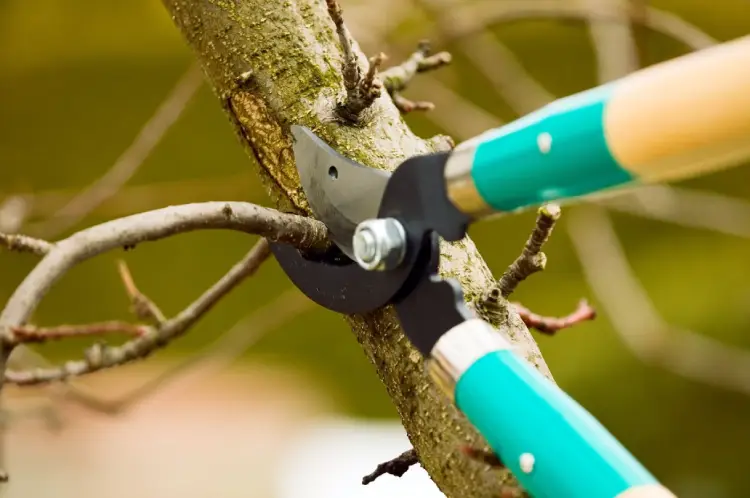A captivating element of nature, trees offer innumerable benefits. From their beauty which enriches landscapes, to the provision of oxygen which sustains life, trees are an indispensable part of our world. A fundamental subset of tree care revolves around the art and science of pruning. To the untrained eye, pruning may seem a rudimentary task, but in essence, it’s a blend of technical expertise and understanding the unique needs of trees. This commitment to pruning augments not only the aesthetic appeal of trees but also bolsters their health and longevity. For every individual interested in the majestic world of arboriculture, this guide delves comprehensively into top tree pruning techniques for healthy trees.
Understanding the Science of Tree Growth
The growth of trees is a complex, fascinating process that underscores the intricacy of nature. Here’s some insight – trees grow via the process of cell division (mitosis), which predominantly occurs in the extreme tips of shoots, referred to as terminal buds. The growth cells in these buds carry the responsibility of dividing and elongating incessantly, thus forming branches and leaves.
The role of pruning takes root in this growth cycle, with a strategic and methodical approach significantly improving tree health and longevity. People often wonder how pruning translates into health benefits, given that it involves cutting away parts of the tree. The key insight lies in the fact that pruning redirects a tree’s energy and focus. When executed expertly, it results in the diversion of trees’ resources towards the formation and strengthening of desired branches. This enhances the vitality, productivity, and form of the tree over time.
Top Pruning Techniques for Different Tree Types
Each tree species comes with its mosaic of traits, requiring a varied repertoire of tree pruning techniques. Conducive pruning approaches take these differences into account, tailoring methods to the nature of the tree species at hand. Deciduous trees, for instance, seasonally shed off all their leaves. With a usually dense canopy, these trees benefit from frequent pruning that helps maintain an open canopy. This, in turn, encourages better airflow and light penetration, reducing the susceptibility of the canopy to dampness-induced fungal diseases.
Conversely, evergreen trees, true to their name, remain lush throughout the year. They are inherently more structured and require less pruning. However, when pruning is necessary, focussing on ensuring a balanced look by reducing overgrown or disproportionately long branches can retain their natural shape and enhance aesthetic appeal. Fruit trees, on the other hand, are a distinct entity. Pruning them largely involves prioritizing their fruit production potential. An effective approach involves eliminating suckers and water sprouts, along with encouraging the growth of horizontal branches. This regimen promotes optimal fruit yield and positions the tree for long-term health benefits.
When to Prune Your Trees
In tree care and arboriculture, timing indeed makes a crucial difference, and nowhere is this more evident than in tree pruning. The consensus among experts is that young trees greatly benefit from early and frequent pruning. This early intervention offers dual benefits – it allows the tree to adapt and recover quickly, and it plays a pivotal role in guiding the shape, branching, and overall structure of the maturing tree.
In contrast, mature trees generally require less frequent pruning. An ideal time frame is during late winter or early spring when trees are dormant. Here, the philosophy is to minimize the stress on the tree, given that it’s not involved in active growth. An essential caveat here is for emergencies. When trees pose immediate risks to properties due to damage, disease, or extreme weather conditions, pruning becomes necessary, irrespective of the time of year.
Tools of the Trade
Coming to the practical aspect of tree pruning is predicated on using the right tools. For smaller branches, pruning shears are ideal. For relatively thicker branches, lopping shears come into play. Pruning saws are handy for large branches, and for those branches that are out of hand reach, a pole pruner is your best bet.
Choosing tools is not just about availability but also quality. Durable tools are essential to ensure clean, precise cuts, minimizing potential harm to the tree. Safety considerations are equally important when utilizing pruning tools. Protective gear such as gloves, safety goggles, and sturdy footwear can mitigate the risk of accidents. Moreover, tool maintenance is paramount. Regularly cleaning and sharpening your tools ensures their effectiveness and longevity.
Common Mistakes in Tree Pruning and How to Avoid Them
Like any other activity, tree pruning has its share of myths and common mistakes. One such pitfall is over-pruning which refers to removing too much of a tree at one time. This can strain and destabilize the tree because it abruptly loses a substantial portion of its leaf-bearing structure, thereby distressing its physiological balance.
Another widespread misconception revolves around cutting branches too close to the trunk. This often results in the removal of what’s known as the branch collar, a region packed with disease-fighting cells – an unintentional, but harmful mistake. Avoiding these mistaken practices calls for consulting a qualified arborist or dedicating time to learning and refining the correct pruning techniques.
Conclusion
In a nutshell, understanding, appreciating, and mastering the skill of tree pruning are pathways toward healthier, thriving trees full of vitality. The benefits and importance of pruning are multifold. Gaining in-depth knowledge about the complexity of tree growth, recognizing the difference in pruning techniques necessitated by distinct tree species, and acknowledging the impact of timing on effective pruning can all significantly contribute to mitigating common pruning errors.
Related: Why Plant Delivery Online is a Great Gift for Your Loved Ones
Related: Steps to Start a Plant Nursery



 How to detox weed? General Tips
How to detox weed? General Tips